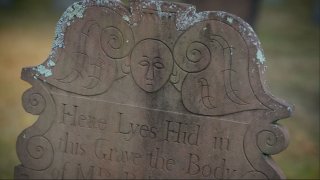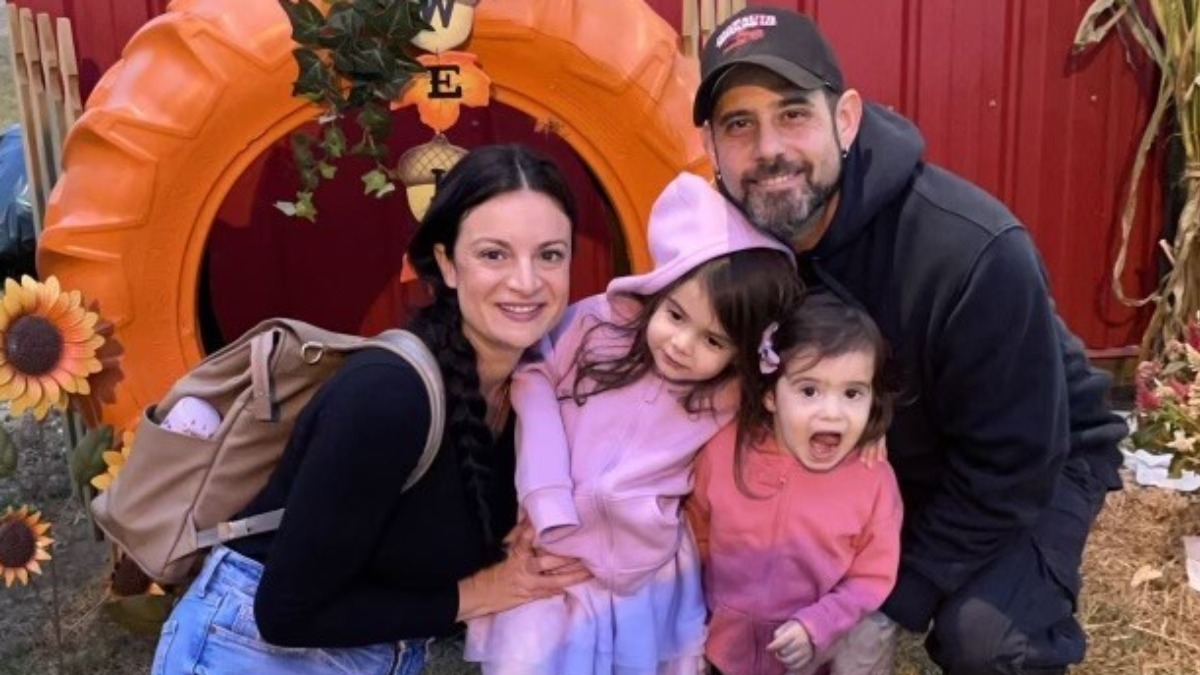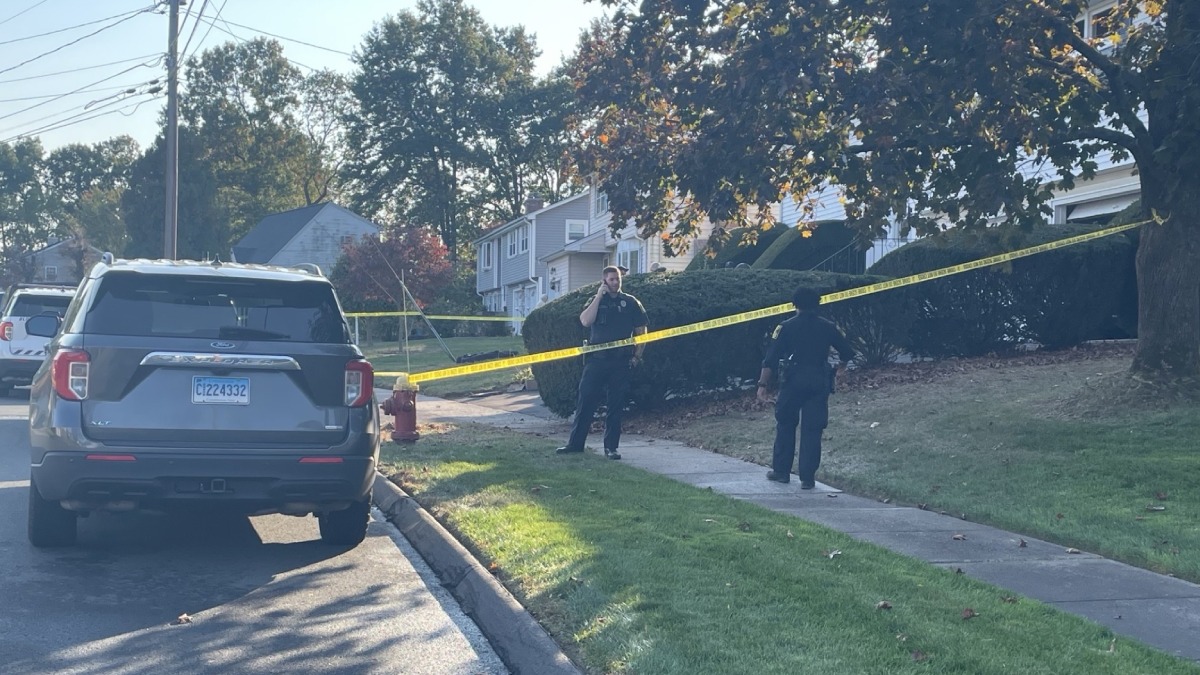
It’s one of the oldest documented parts of our state’s history, and also one of the darkest. The Connecticut Witch Trials occurred from 1647 to 1663, more than four decades before the trials in Salem, Massachusetts.
“The witch trials in Connecticut were extremely deadly. The first seven people who were accused and then indicted were convicted and subsequently hanged. Seven for seven. That’s a brutal history,” said Beth Caruso, a member of the Connecticut Witch Trial Exoneration Project.
Of the accused, 34 people were indicted and 11 were executed for witchcraft. While Salem is famous for its witch trials, Connecticut’s history is a story not often told.
“Salem was the tail end. It was the grand finale of the witch trials,” Caruso said. “Everything that led up to it started in Connecticut. It's been kind of on the down low in Connecticut, not really talking about.”
Get top local stories in Connecticut delivered to you every morning. Sign up for NBC Connecticut's News Headlines newsletter.
Author and researcher Beth Caruso lives in Windsor where the first documented hanging victim, Alse (Alice) Young, was from.
“I learned about Alice Young through a neighbor. Not a lot was known about her. It drove me crazy, and I wanted to learn more,” she said.
Caruso combed through property records, birth and death certificates, piecing together what happened to Young. She found that in 1647 there was an influenza epidemic in town.
Local
“She was probably accused because of this epidemic and this huge cluster of deaths right next door to her, where four children died, and her one child survived,” Caruso explained.
Young was ultimately accused of being a witch and Caruso said she was hanged in Hartford.
“We’re not sure exactly where,” she adds, “some people speculate it was near the Old State House.”
It’s Young’s case that sparked the hysteria, and some believe she was the first victim not only in Connecticut but in all of the colonies.
“The Witch Trials really did start with Alice in their most gruesome forms. There were some witch trials in the colonies before Alice Young, but they never led to a hanging,” Caruso said. “It was her case that really opened the floodgates of this injustice.”
After Young, a second woman was accused in Windsor.
“Lydia Gilbert, which is a strange case. She was accused of doing witchcraft on a gun that somebody else had misfired that led to a death,” Caruso said.
Caruso and others pushed to have both women honored by the town of Windsor. Today, the justice room at Windsor Town Hall is named in their honor, and their names are etched onto bricks that are displayed in a memorial near Town Hall.
But their stories were just the beginning.
“During the Hartford Witchcraft Panic of 1662 to 1663, 11 people were accused of witchcraft, and four were executed,” said historian Katherine Hermes.
People were accused of being witches across the Colony of Connecticut. From Wethersfield, Farmington and Hartford, down to southern Connecticut in the Stratford area.
“Goody Bassett and Goody Knapp, who were in the southern regions of Connecticut, they were hanged in that area, in the Stratford area,” Caruso said.
Connecticut’s colonial laws listed witchcraft as a capital crime.
“The definition of a witch back then was very different than what a modern person might think of - what these people were accused of were aligning with Satan to do real harm to their communities,” Caruso explained.
The hysteria that sparked the witch trials happened during an unsettled time in history, when Gov. John Winthrop Jr. was overseas in England.
“[He was] obtaining a charter which united the New Haven and Connecticut colonies,” Hermes said. “This was something that not everybody wanted, and it was a time that stirred up a lot of feelings of anxiety. What would happen? Would the king take it away?”
Winthrop aimed to ease the panic by putting more parameters around the witch trial, making it so two people had to step forward as witnesses to the witchcraft, these researchers explain.
“He didn't believe that they could actually do the things that they were accused of,” Caruso said, “such as changing the weather, making a bridge go out, causing a pandemic. It just didn’t make sense to him. So, he started to, he started to argue against these cases. We’re lucky we had John Winthrop Jr., or it would have gotten much worse in Connecticut.”
It wasn’t until 300 years later when the Connecticut Witch Trial Exoneration Project formed and set out on a quest to right these wrongs. They brought in State Rep. Jane Garibay and drafted a resolution.
“For these families, it is very serious,” Garibay said. “I kept hearing from people all over the country, even from England and Scotland, and people who were descendants, and there was one from Pennsylvania, and she said, ‘What do I tell my daughter and granddaughter about their ninth-generation grandmother that, you know, what happened to her?’”
Sen. Saud Anwar came on board on the Senate side, and although they faced some opposition, it passed 33-1 in the Senate, and 121-30 in the House in May 2023.
Advocates believe there’s more to be done, like keeping this history alive. In August, the first-ever Connecticut Witch Trials Festival was held on Pratt Street to do just that, educate people about what happened here in the 1600s.
“These people were put to death for just being different,” said organizer Thomas Gormley. “That’s why we wanted to have the festival. We wanted to bring more knowledge for people. Because when you say, ‘Hey, did you hear about the Connecticut? Nobody knows. But you say, Salem, everybody knows.”
During the season when witches are top of mind, these advocates say it’s important to also keep in mind the history, and what can happen when things get out of hand.
“In present day, we see certain groups, immigrants, being scapegoated, lies being told about them with actual harmful consequences,” Caruso said.
“It’s not so much that history repeats itself, it’s that human nature responds to crises in very similar ways. And in times of crisis, it’s natural to turn to the underdogs in society, the marginalized, the people easy to scapegoat,” Hermes added. “I think we always learn a lesson from what happens. The witchcraft trials in Connecticut and elsewhere targeted the poor, they targeted women, not exclusively, but mostly. They focused on evidence that was very speculative, if not actually spectral, and evidence that today would, of course, no longer be accepted in a court of law.”
Those involved with the Connecticut Witch Trial Exoneration Project would like to see a permanent memorial in Hartford to honor the lives lost and the lives affected by the trials.



